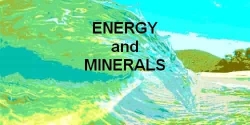Mineral Systems for Australia
Mineral Systems for Australia
source: Geoscience Australia www.ga.gov.au/about/projects/minerals-archive/current/mineral-systems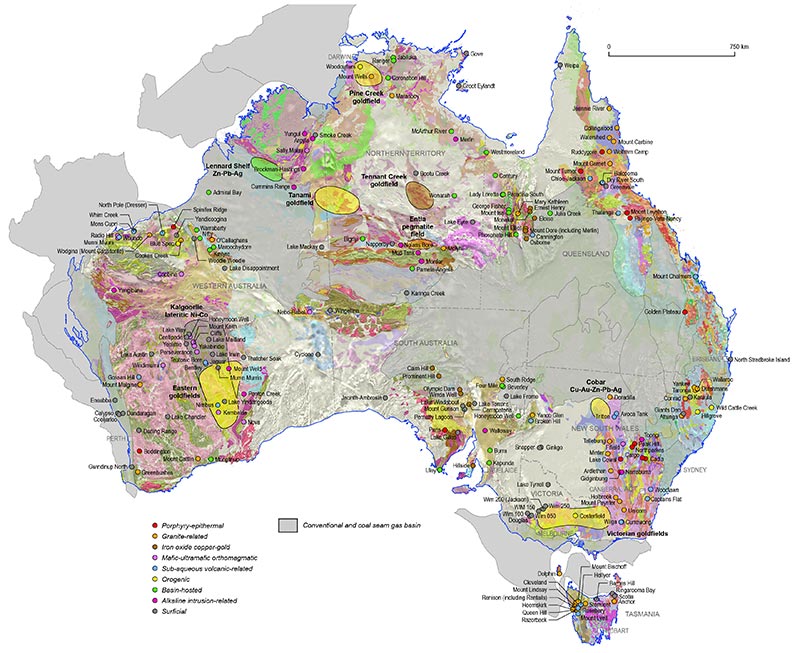
Characteristics of major mineral systems
1. Porphyry-epithermal (porphyry Cu-Au-Mo, low
sulfidation epithermal, high sulfidation epithermal, skarn)
2. Granite-related (intrusion-related gold,
intrusion-related Sn-W, porphyry Mo, pegmatitie rare metal,
Rossing-type U?)
3.
Iron-oxide copper-gold (Olympic Dam-type IOCG, Andean-type IOCG,
Cloncurry-type IOCG; Tennant-type IOCG)
4. Mafic-ultramafic orthomagmatic
(komatiite-associated Ni-Cu, mafic-ultramafic intrusion-hosted Ni-Cu,
PGE and Fe-V-Ti)
5. Subaqueous volcanic-related
(volcanic-hosted massive sulfide, Broken Hill-type Zn-Pb-Ag)
6. Orogenic (lode gold, Cobar-type
Cu-Au-Zn-Pb-Ag, Couer d’Alene Ag-Zn-Pb)
7. Basin-hosted (Mt Isa-type Zn-Pb-Ag, Mississippi
Valley-type Zn-Pb, sediment-hosted Cu-Co-Ag, unconformity-related U,
sandstone-hosted U, calcrete-hosted U, iron ore, phosphate, graphite)
8. Alkaline intrusion-related (diamonds, REE
deposits, peralkaline granite-related U-Th-REE)
9. Surficial (placers [Au, Sn, heavy minerals,
diamond, paleoplacer Au-U], supergene upgrading [secondary Cu,
non-sulfide Zn and Pb, bauxite, channel iron, lateritic Ni-Co], salt
lake Li-K-B)
This table summarises the characteristics of major mineral systems, including the tectonic and geodynamic setting, the geological setting, the redox (reduction-oxidation) state of the ore fluids, the geodynamic driver, and the fluid driver.
Mineral systems include porphyry-epithermal, granite-related, iron-oxide copper-gold, mafic-ultramafic orthomagmatic, sub-aqueous volcanic-related, orogenic, basin-hosted, alkaline intrusion-related and surficial.
Characteristics of major mineral systems.
| Mineral system (included deposit-types) | Tectonic/geodynamic setting | Geological setting | Redox state of metal-bearing fluids | Geodynamic driver | Fluid driver |
|---|---|---|---|---|---|
| 1. Porphyry-epithermal (porphyry Cu-Au-Mo, low sulfidation epithermal, high sulfidation epithermal, skarn) | Convergent—magmatic arc | Volcanic-plutonic igneous province | Weakly oxidised to weakly reduced (ΣH2S ˜ ΣSO4 to ΣH2S > ΣSO4); strongly oxidised (ΣSO4 > ΣH2S) fluids in high sulfidation epithermal deposits | Change in subduction (direction, speed or dip angle) | Magmatism (magmatic fluids and/or convection of ambient fluids) |
| 2. Granite-related (intrusion-related gold, intrusion-related Sn-W, porphyry Mo, pegmatitie rare metal, Rossing-type U?) | Convergent, generally inboard from arcs generally with post-collisional timing | Volcanic basin | Moderately to strongly reduced (ΣH2S > ΣSO4 to ΣH2S >> ΣSO4) | Collision and accretion, change in subduction (direction, speed or dip angle) | Felsic magmatism (magmatic fluids and/or convection of ambient fluids) |
| 3. Iron-oxide copper-gold (Olympic Dam-type IOCG, Andean-type IOCG, Cloncurry-type IOCG; Tennant-type IOCG) | Convergent, distal back-arc to within-plate; near craton margins | Pre-existing back-arc or continental rift basin host settings; volcanic-plutonic provinces | Both highly oxidised (ΣSO4 > ΣH2S) and weakly to moderately reduced (ΣH2S ˜ ΣSO4 to ΣH2S > ΣSO4) | Shift from contraction to extension | Mafic and felsic magmatism (convection of ambient fluids and magmatic fluids) |
| 4. Mafic-ultramafic orthomagmatic (komatiite-associated Ni-Cu, mafic-ultramafic intrusion-hosted Ni-Cu, PGE and Fe-V-Ti) | Convergent—back-arc, divergent | All types of basin and basement | Not applicable | Change in subduction (direction, speed or dip angle), plate reorganisation, meterorite impact | Mafic-ultramafic magmatism |
| 5. Subaqueous volcanic-related (volcanic-hosted massive sulfide, Broken Hill-type Zn-Pb-Ag) | Convergent—back-arc, divergent | Back-arc basin, transpressional basin, ensialic rift | Weakly to strongly reduced (ΣH2S ˜ ΣSO4 to ΣH2S >> ΣSO4) | Change in subduction (direction, speed or dip angle), plate re-organisation | Magmatism (magmatic fluids and/or convection of ambient fluids—seawater) |
| 6. Orogenic (lode gold, Cobar-type Cu-Au-Zn-Pb-Ag, Couer d’Alene Ag-Zn-Pb) | Convergent—collision and post-collision | Volcanic, back-arc, for-arc, platform/passive margin, rift, sag | Mostly reduced (ΣH2S > ΣSO4) | Collision and accretion, change in subduction (direction, speed or dip angle) | Magmatism (magmatic fluids and/or convection of ambient fluids), topography; deformation, metamorphic devolatilisation |
| 7. Basin-hosted (Mt Isa-type Zn-Pb-Ag, Mississippi Valley-type Zn-Pb, sediment-hosted Cu-Co-Ag, unconformity-related U, sandstone-hosted U, calcrete-hosted U, iron ore, phosphate, graphite) | Late convergent—back-arc, divergent, early basin inversion | (Rifted) passive margin, platform, ensialic basins | Mostly oxidised (ΣSO4 > ΣH2S) fluids, although sedimentary precursors (banded iron formation, carbonaceous shale) form under mixed conditions prior to upgrading by later processes | Extension, plate reorganisation, basin inversion | Plate reconfiguration and shift in stress (extension to contraction or visa-versa); basin dewatering, convection, topography, tectonic pumping, post-orogenic magmatism |
| 8. Alkaline intrusion-related (diamonds, REE deposits, peralkaline granite-related U-Th-REE) | Commonly within plate | All types of basin and basement | Unknown | Unknown | |
| 9. Surficial (placers [Au, Sn, heavy minerals, diamond, paleoplacer Au-U], supergene upgrading [secondary Cu, non-sulfide Zn and Pb, bauxite, channel iron, lateritic Ni-Co], salt lake Li-K-B) | All | Regolith, all types of basins | Both oxidised (ΣSO4 > ΣH2S) and reduced (ΣH2S > ΣSO4) | Uplift, climate change | Topography (for placers), meteoric (for supergene upgrading) |
1. Porphyry-epithermal (porphyry Cu-Au-Mo, low sulfidation epithermal, high sulfidation epithermal, skarn)
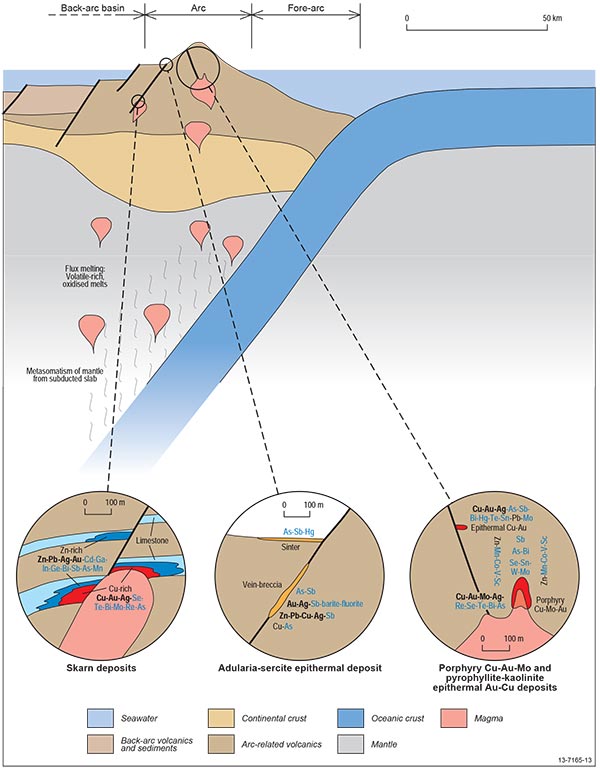
2. Granite-related (intrusion-related gold, intrusion-related Sn-W, porphyry Mo, pegmatitie rare metal, Rossing-type U?)
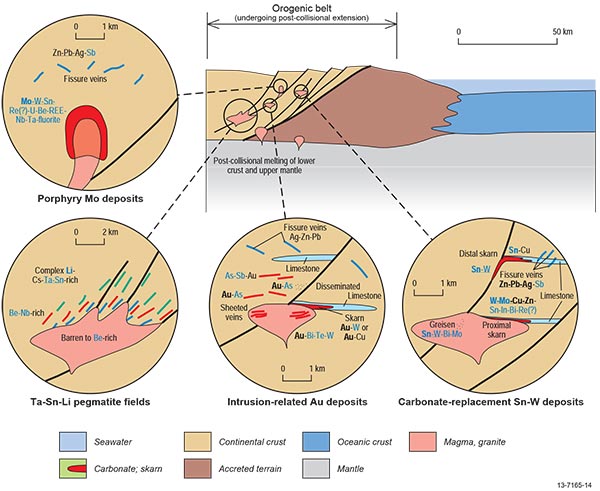
3. Iron-oxide copper-gold (Olympic Dam-type IOCG, Andean-type IOCG, Cloncurry-type IOCG; Tennant-type IOCG)
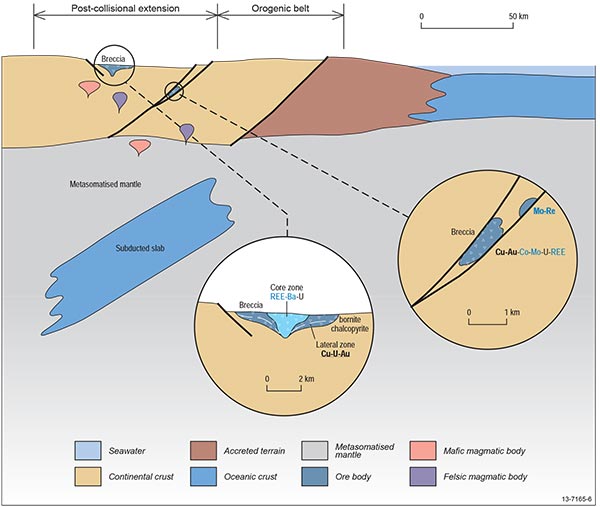
4. Mafic-ultramafic orthomagmatic (komatiite-associated Ni-Cu, mafic-ultramafic intrusion-hosted Ni-Cu, PGE and Fe-V-Ti)
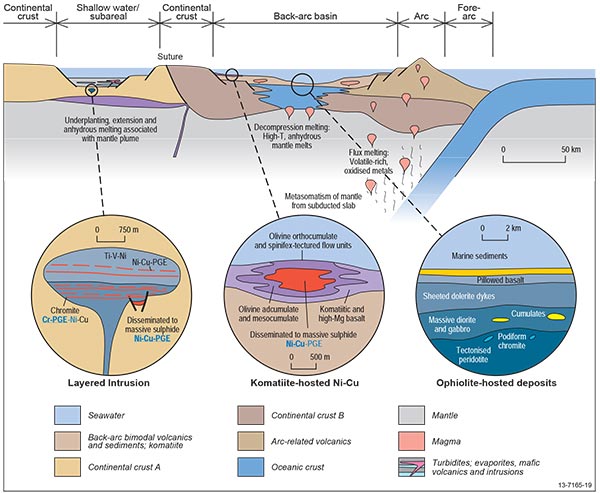
5. Subaqueous volcanic-related (volcanic-hosted massive sulfide, Broken Hill-type Zn-Pb-Ag)
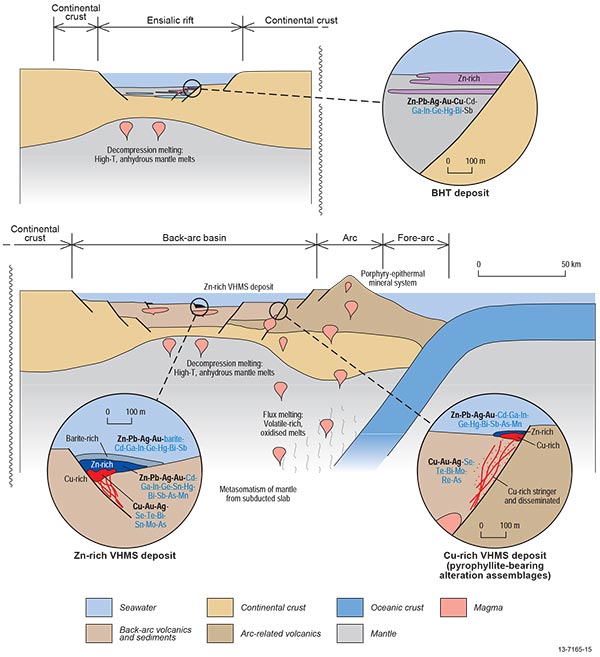
6. Orogenic (lode gold, Cobar-type Cu-Au-Zn-Pb-Ag, Couer d’Alene Ag-Zn-Pb)
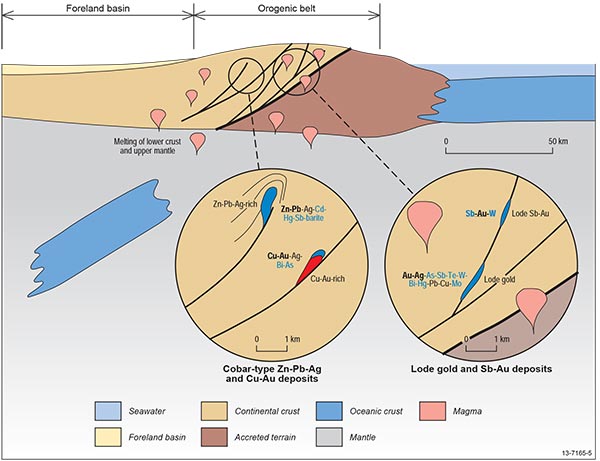
7. Basin-hosted (Mt Isa-type Zn-Pb-Ag, Mississippi Valley-type Zn-Pb, sediment-hosted Cu-Co-Ag, unconformity-related U, sandstone-hosted U, calcrete-hosted U, iron ore, phosphate, graphite)
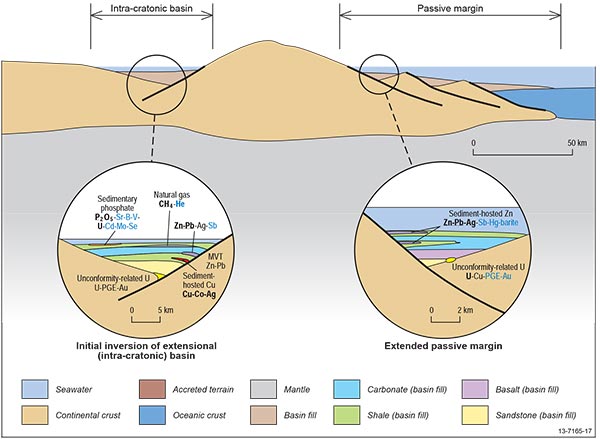
8. Alkaline intrusion-related (diamonds, REE deposits, peralkaline granite-related U-Th-REE)
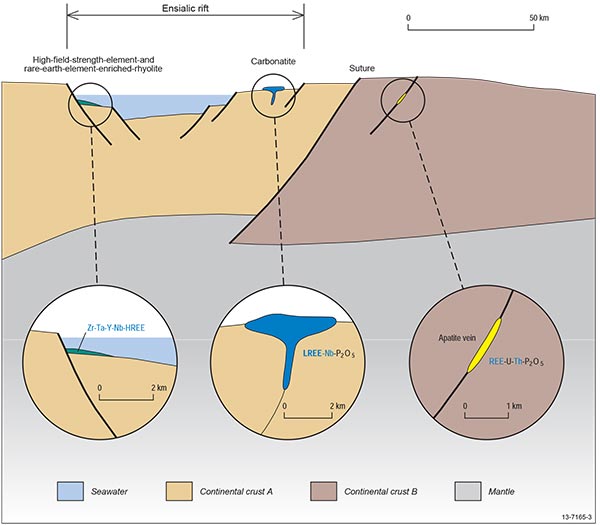
9. Surficial (placers [Au, Sn, heavy minerals, diamond, paleoplacer Au-U], supergene upgrading [secondary Cu, non-sulfide Zn and Pb, bauxite, channel iron, lateritic Ni-Co], salt lake Li-K-B)
![9. Surficial (placers [Au, Sn, heavy minerals, diamond, paleoplacer Au-U], supergene upgrading [secondary Cu, non-sulfide Zn and Pb, bauxite, channel iron, lateritic Ni-Co], salt lake Li-K-B)](9surficial.jpg)

